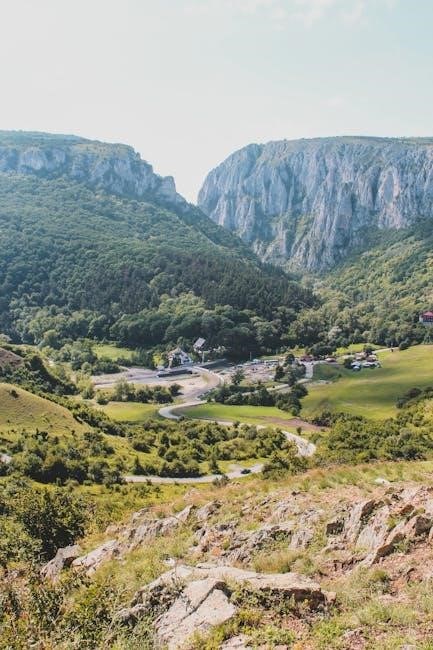Embark on unforgettable journeys through breathtaking landscapes, diverse wildlife, and immersive experiences. This guide helps you plan, explore, and cherish the natural beauty of America’s national parks.
Why National Parks Are a Must-Visit Destination
National parks offer unparalleled opportunities to connect with nature, explore diverse ecosystems, and experience unforgettable adventures. From the majestic grandeur of mountain ranges to the serene beauty of forests and lakes, these destinations provide a perfect escape from urban life. They are treasures that inspire awe, promote well-being, and foster a deeper appreciation for the natural world.
Overview of the Guide
This comprehensive guide provides everything you need to plan an unforgettable national park adventure. From selecting the perfect park to crafting an ideal itinerary, it covers accommodation options, essential gear, safety tips, and budgeting strategies. Whether you’re a seasoned explorer or a first-time visitor, this guide ensures a memorable and well-prepared journey through nature’s wonders.
Choosing the Right National Park for Your Adventure
Discover how to match your interests with the perfect park, whether you crave scenic hikes, wildlife encounters, or serene landscapes. Explore diverse options and unique experiences.
How to Select a Park Based on Your Interests
Start by identifying your preferences: hiking, wildlife, photography, or relaxation. Consider the park’s unique features, seasonal activities, and accessibility. Research trails, scenic drives, and guided tours. Match your interests with park highlights to create a personalized adventure that aligns with your passions and ensures an unforgettable experience in nature.
Popular National Parks for Different Activities
For hiking enthusiasts, Yellowstone and Grand Canyon offer iconic trails. Wildlife lovers flock to Yellowstone and Denali for diverse animal sightings. Photographers favor Yosemite and Zion for stunning vistas. Families enjoy Acadia and Great Smoky Mountains for scenic drives and kid-friendly activities. Each park caters to unique interests, ensuring an unforgettable adventure tailored to your preferences.
Planning Your Itinerary
Create a balanced schedule mixing must-see sights, hiking trails, and downtime. Prioritize key attractions, check park hours, and allow flexibility for spontaneous explorations.
How to Draft a Realistic and Exciting Schedule
Start by listing must-see attractions and activities. Allocate time for each, considering travel distances and trail lengths. Balance structured plans with flexibility for spontaneous adventures. Prioritize early mornings and late afternoons for optimal experiences. Include breaks and downtime to recharge. Use park maps and visitor guides to streamline your itinerary. Adjust based on weather and trail conditions.
Essential Activities to Include in Your Plan
Incorporate a mix of hiking, wildlife spotting, and scenic drives. Don’t miss iconic viewpoints and must-see landmarks. Plan for sunrise or sunset at key spots for unforgettable photos. Add time for picnics and relaxation. Consider guided tours for insider insights. Include water activities like kayaking or rafting where available. Allow room for spontaneous exploration and unexpected adventures.
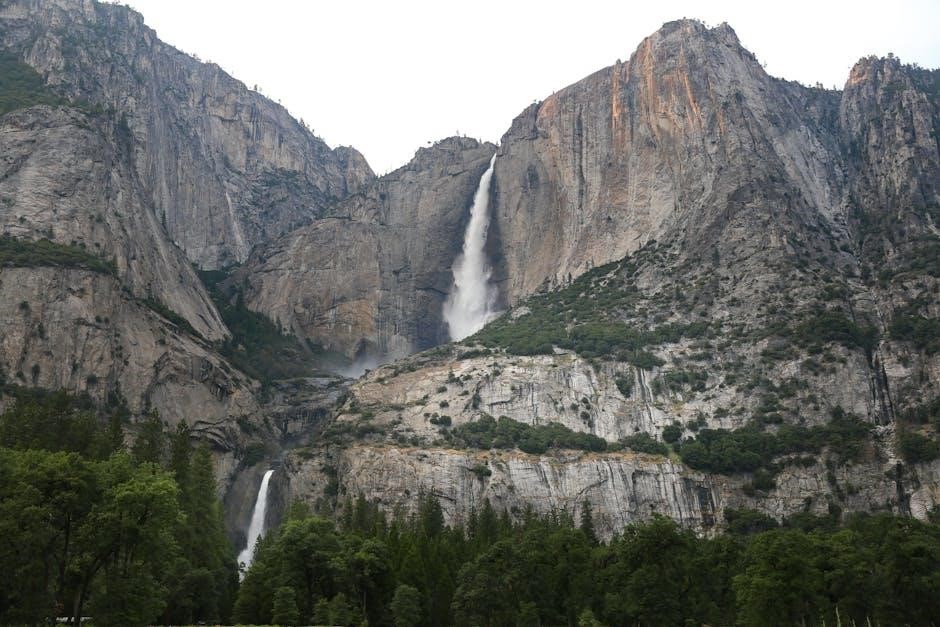
Accommodation Options in and Around National Parks
Discover diverse lodging choices, from budget-friendly campsites to cozy lodges and luxury hotels. Consider eco-friendly options and book in advance, especially during peak seasons. Plan wisely.
Best Places to Stay for Different Budgets
From budget-friendly campsites to mid-range lodges and luxury resorts, national parks offer diverse accommodations. For backpackers, consider affordable park lodges or budget hotels. Mid-range options include vacation rentals with amenities. Luxury seekers can opt for high-end resorts with scenic views. Always book in advance, especially during peak seasons, to secure your preferred stay.
Camping vs. Lodging: Pros and Cons
Camping offers an immersive nature experience, with budget-friendly options like tents or RVs, but requires more effort and may lack amenities. Lodging provides comfort and convenience, with access to utilities, but can be costly. Choose based on your priorities: adventure and savings with camping, or relaxation and ease with lodging. Plan accordingly for a seamless experience.
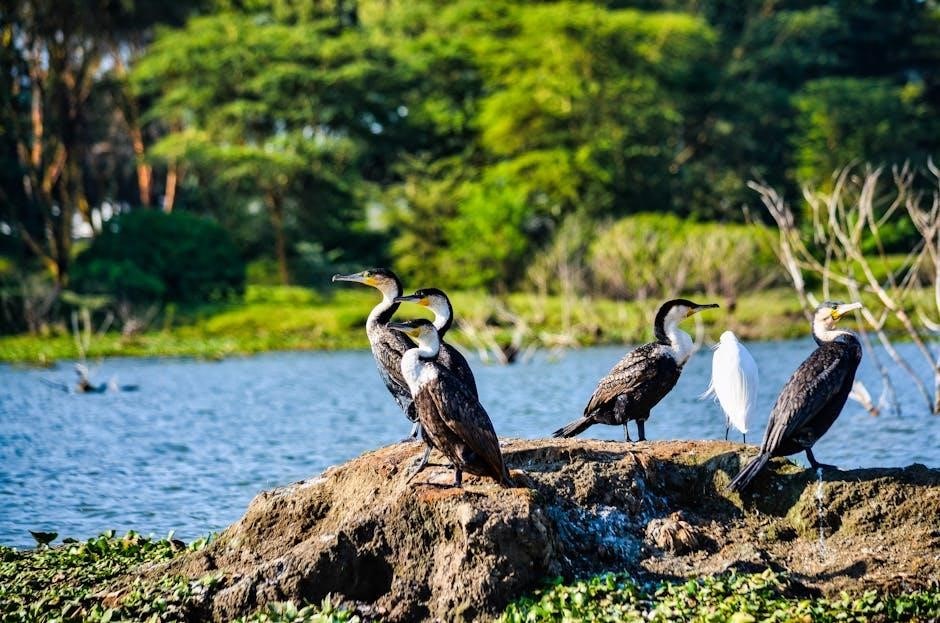
Packing Essentials for a National Park Adventure
Don’t forget sturdy hiking boots, water, snacks, a map, first aid kit, and layers for varying weather. Pack light but smart for every adventure.
Must-Have Gear for Hiking and Exploration
Essential gear includes a sturdy backpack for carrying supplies,
a reliable compass for navigation,
a water filtration system for safe drinking water,
a portable shelter like a tarp or lightweight tent,
a multi-tool for various tasks,
a whistle for emergencies,
and a headlamp for nighttime adventures.
Additionally, bring a fire starter and an emergency blanket.
These items ensure safety and comfort during exploration.
What to Wear for Various Weather Conditions
Dress in layers to adapt to changing weather. For hot days, breathable fabrics like cotton or moisture-wicking materials are ideal. In cold conditions, opt for insulated jackets and thermal base layers. Waterproof gear is essential for rain, and sturdy boots are a must for all terrains. Always check forecasts and pack accordingly for a safe and enjoyable adventure.
Safety Tips and Emergency Preparedness
- Always carry a map, compass, and GPS for navigation.
- Pack essentials like a first aid kit and emergency shelter.
- Stay informed about weather conditions and trail closures.
- Know basic first aid and emergency contact numbers.
How to Stay Safe While Hiking and Camping
- Carry a map, compass, and GPS for navigation.
- Pack essentials like a first aid kit and emergency shelter.
- Stay informed about weather conditions and trail closures.
- Know basic first aid and emergency contact numbers.
- Inform someone about your itinerary before heading out.
- Always follow park rules and safety guidelines.
What to Do in Case of Emergencies
In case of emergencies, stay calm and assess the situation. For injuries, apply first aid and seek shelter if needed. If lost, stay put and use a whistle to signal for help. Carry an emergency beacon or satellite phone for remote areas. Keep a backup of supplies and know the nearest ranger station or emergency contact number.
Budgeting and Time Management
Set a realistic budget, prioritize activities, and allocate time wisely to maximize your adventure. Plan ahead to avoid overspending and ensure a stress-free experience.
How to Plan Your Trip Without Overspending
Start by setting a clear budget and identifying essential expenses like entry fees, lodging, and food. Research free or low-cost activities, such as hiking or wildlife viewing, to minimize costs. Consider visiting during off-peak seasons when prices are lower and crowds are smaller. Use park passes or annual memberships for frequent visits to save money. Additionally, pack your own meals and snacks to reduce dining expenses. Plan your itinerary to include a mix of free and paid activities, ensuring a balanced and enjoyable trip without overspending. Utilize online resources and park guides to find budget-friendly options and special offers.
Time-Saving Tips for Maximizing Your Adventure
Planning is key to maximizing your adventure. Use park maps and guides to identify must-see spots, saving time navigating. Start early to avoid crowds and make the most of daylight. Focus on key attractions and trails to optimize your schedule. Consider ranger-led tours for efficient exploration. Utilize shuttle services to reduce travel time between locations.
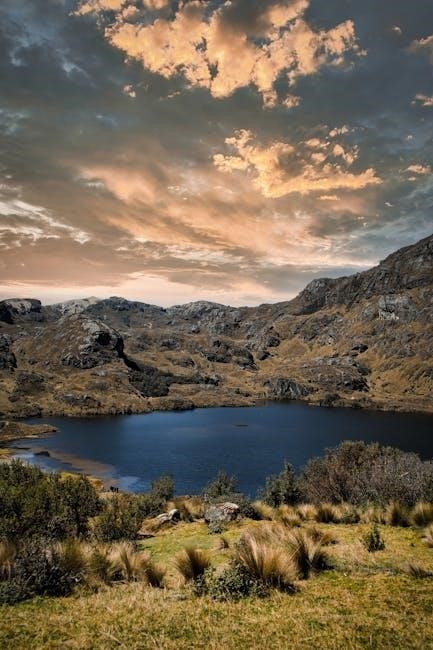
Guided Tours vs. Solo Adventures
Guided tours offer expert-led experiences, ensuring safety and convenience, while solo adventures provide the freedom to explore at your own pace. Choose based on your preferences and budget.
Pros and Cons of Guided Tours
Guided tours offer expert knowledge, safety, and convenience, ideal for unfamiliar terrain. They often include exclusive insights and access to hidden gems. However, they can be costly and less flexible, limiting personal exploration. Weighing these factors helps decide if a guided tour aligns with your adventure goals and preferences.
How to Plan a Successful Solo Trip
Research thoroughly, create a realistic itinerary, and prioritize safety; Share your plans with trusted contacts and stay connected. Pack essentials like a map, first aid kit, and portable charger. Embrace flexibility and enjoy the freedom to explore at your own pace. Solo travel fosters independence and personal growth, offering unique opportunities for self-discovery and unforgettable experiences.
Seasonal Considerations and Best Times to Visit
National parks offer unique experiences in every season. Plan your visit based on weather preferences, crowd levels, and activity availability to maximize your adventure and enjoyment.
How to Choose the Best Season for Your Visit
Consider your interests and preferences when selecting the best season for your national park visit. Spring offers blooming wildflowers, summer provides warm weather for hiking, autumn brings vibrant foliage, and winter offers serene landscapes and fewer crowds. Each season promises unique experiences, so plan accordingly to make the most of your adventure and enjoy the park’s natural beauty.
Weather and Trail Conditions to Expect
National parks experience varied weather conditions depending on the season and location. Always check forecasts and trail updates before your visit; High-altitude parks may have snow year-round, while desert parks can be extremely hot. Be prepared for changing conditions and potential trail closures due to weather or maintenance.
Wildlife and Photography Opportunities
Spot iconic wildlife like bears, bison, and eagles in their natural habitats. Capture stunning photos using telephoto lenses and early morning or golden hour lighting for optimal results.
How to Spot and Respect Wildlife
Keep a safe distance to avoid disturbing animals. Use binoculars for closer views without intrusion. Stay quiet and patient to increase spotting chances. Research habitats and behaviors to locate species effectively. Never feed wildlife to maintain their natural diet and safety. Follow park guidelines to protect both you and the animals, ensuring a respectful and safe encounter for all.
Tips for Capturing Stunning Photos
Arrive early or stay late for golden-hour lighting. Use a tripod for sharp images in low light. Experiment with angles and perspectives to add depth. Focus on unique compositions, like framing landscapes with natural elements. Capture wildlife with patience and a telephoto lens. Don’t forget to include people for scale in vast environments, and always keep extra batteries and memory cards handy.
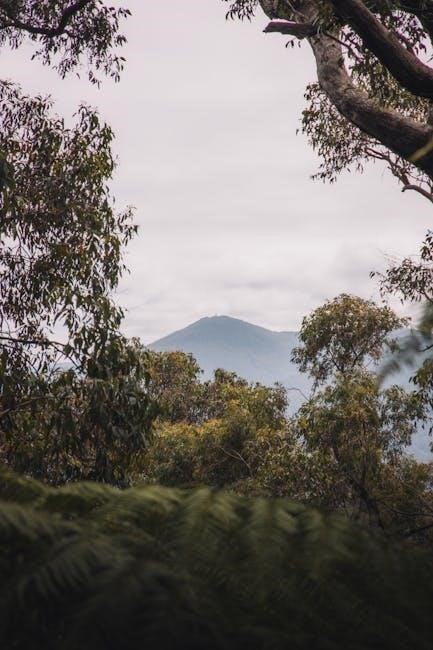
Family-Friendly Activities and Trails
Explore varying trails suitable for all ages and enjoy educational programs that engage kids, ensuring a fun and safe adventure for the whole family.
Best Trails and Activities for Families
Discover trails with gentle terrain, such as the Bear Lake Loop in Rocky Mountain National Park, perfect for strollers. Interactive ranger programs and junior ranger activities keep kids engaged while fostering a love for nature. Many parks also offer biking, kayaking, and wildlife-watching, ensuring fun for all ages and skill levels.
How to Keep Kids Engaged and Safe
Engage children with interactive nature guides, scavenger hunts, and educational programs. Teach them about wildlife safety, trail rules, and emergency procedures. Ensure they stay within sight and carry a whistle or ID tag. Pack kid-friendly snacks and water to keep energy levels high during adventures; Make learning fun to foster a lifelong love for nature.
Hidden Gems and Less Crowded Areas
VENTURE beyond popular spots to discover secluded trails, pristine lakes, and untouched landscapes. Exploring these secret areas offers unique experiences and a deeper connection with nature.
How to Discover Off-the-Beaten-Path Locations
Uncover hidden gems by researching less-traveled trails, consulting park rangers, and using detailed maps. Exploring early or late in the day often reveals secluded spots. Engage with local guides or online forums for insider tips to experience unique, crowd-free adventures.
Exploring Secret Spots for a Unique Experience
Venture into secluded areas by using detailed maps and insider tips from rangers or locals. Discover hidden waterfalls, serene meadows, or untouched vistas. These secret spots offer opportunities for peaceful reflection, unique photography, and immersive nature experiences. Embrace the thrill of being off the beaten path for an unforgettable and authentic outdoor adventure.
Leaving a Positive Impact on the Environment
Adopt sustainable practices to preserve ecosystems. Carry out all waste, minimize your footprint, and respect wildlife to ensure national parks remain pristine for future generations.
Practices for Preserving National Park Ecosystems
To protect these natural wonders, adopt eco-friendly habits. Carry out all trash, stay on designated trails, and avoid disturbing wildlife. Use biodegradable products, conserve water, and avoid introducing non-native species. Follow park rules and Leave No Trace principles to ensure ecosystems thrive for future generations. Every small action contributes to preserving the environment.
How to Follow “Leave No Trace” Principles
Minimize your impact by staying on trails, avoiding wildlife disturbances, and disposing of waste properly. Pack out all trash, refrain from collecting plants or rocks, and keep campfires contained and extinguished. Respect natural and cultural sites, and avoid introducing invasive species. These practices ensure the preservation of national parks for future generations to enjoy and explore.
